Why we're running it: UK doesn't get new cars with factory-fit LPG tanks. So we are using a dual-fuel Sandero to find out what are we missing?

Life with a Sandero Stepway LPG: Month 4
Why is buying an LPG car a challenge? – 22 November 2017
Cheap, uneventful. Two words I find myself coming back to when people ask what it is like to drive around in an LPG-powered car.
Colleagues who borrow it for a week have a happy knack of using similar words to describe their own experiences. "I don't know why you can't buy one here officially" is the (paraphrased) follow-up point myself and others typically make.
So why is that? As discussed right back at the start of this long-term test, LPG-powered cars, which produce fewer harmful emissions, could be used to help tackle the UK's air-quality problems while we wait for the more widespread availability of affordable electric, zero-emissions cars and a charging network to make their use viable for more motorists.
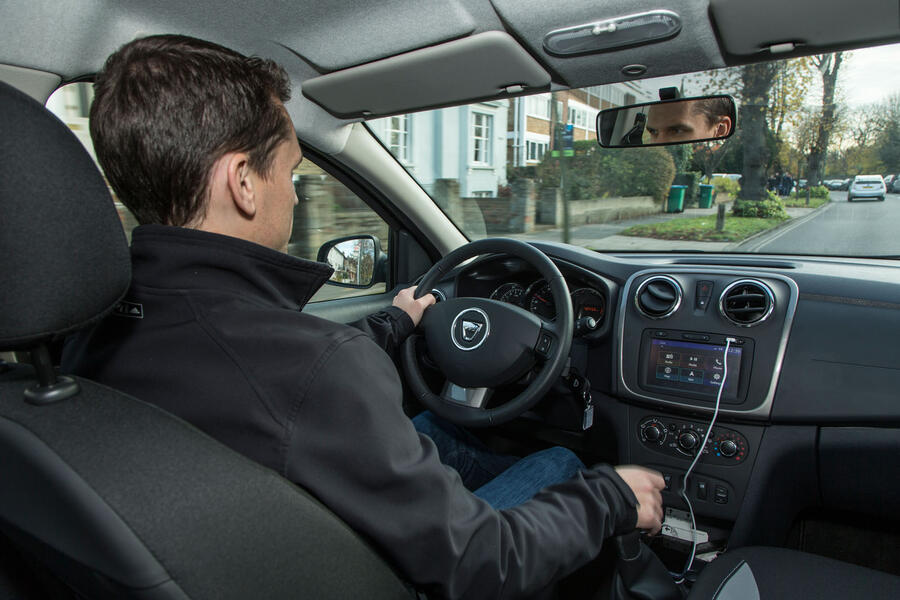
A report landed on my desk with stats on LPG across Europe. On the other side of the English Channel and North Sea, you'll find more than 45,000 LPG stations before you hit the edge of Spain, the Balkans or Turkey, depending on your direction of travel. In the UK, there are only 1250.
Those 45,000 pumps can provide fuel to a whole host of mainstream cars – not just cheap and cheerful ones like the Dacia Sandero we're testing – that leave their respective production plants equipped with an LPG tank alongside their conventional petrol one, meaning no need for an aftermarket conversion.
Alfa Romeo will sell you an LPG-powered Mito or Giulietta; Fiat a 500, 500L, Panda, Tipo or Punto (yes, they still make Puntos); Ford the B-Max, C-Max, Fiesta and Focus; Kia the Picanto, Rio or Venga.
The good people at Mitsubishi will provide your ASX or Outlander with LPG power if you so choose.
Likewise Nissan with the Juke, Micra or Note; and Opel with the Adam, Astra, Corsa, Insignia, Karl (known as the Vauxhall Viva in the UK), Meriva, Zafira Tourer and Mokka X.
Still with us? There's more. The Peugeot 208, Citroën C3, Hyundai i10 and i20, Renault Clio and Mégane, Honda Civic, Subaru XV, Forester and Outback, plus the Ssangyong Tivoli and Korando, complete the set of models sold in the UK that are offered with an LPG option on the continent but not here.
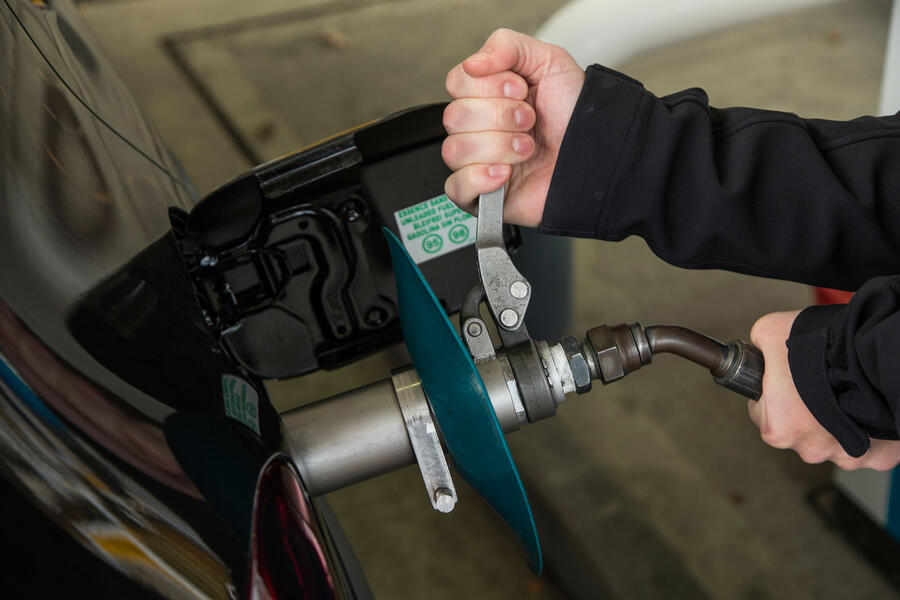
Two main reasons are typically given for it not being offered: first, the LPG-powered cars are not produced in right-hand drive; and second, that LPG is no longer protected from the fuel duty escalator, meaning it is exposed to the same rises in taxation as petrol and diesel.
Autogas, the chief supplier of LPG in the country that was set up as a joint venture between Shell and Calor in 2000, isn't having any of the latter argument.
It points out that the escalator has yet to be enacted and that LPG duty is much lower anyway, at 15.8% of the cost of a litre to the 58.9% of petrol and diesel.
Even if the tax went up, it would remain a much cheaper fuel at the pump than either of its more traditional alternatives.
As for the point about left-hand-drive, Autogas uses the Ford Transit Connect van as an example of an LPG-powered model that is already in production in right-hand drive.It is built in Spain and exported to Hong Kong, where motorists drive on the left, like we do here in the UK.
So, Ford, why not divert some over here to gauge the reaction? From our experience, buyers are missing out unfairly on perfectly decent vehicles.
Mileage: 2260
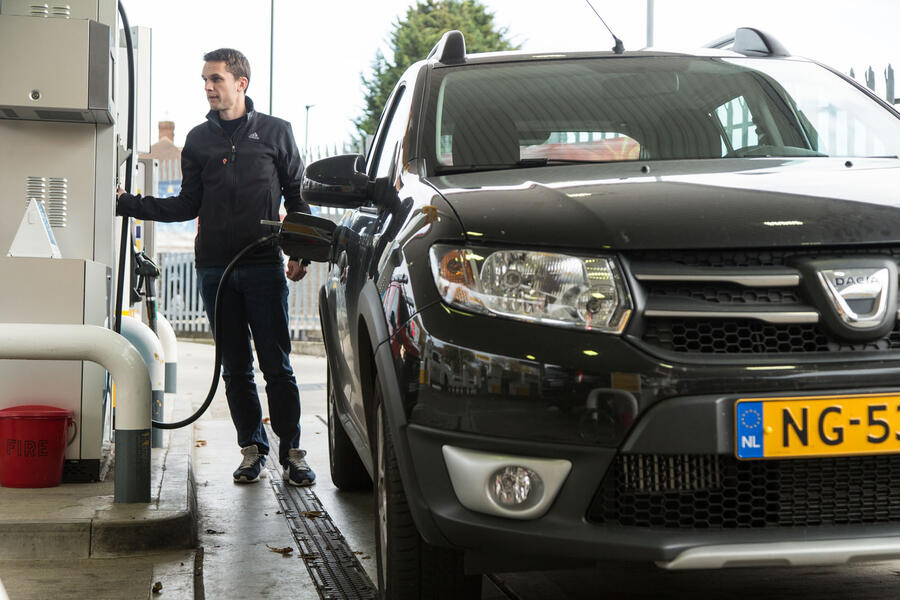
Back to the top
Life with a Sandero Stepway LPG: Month 3
A retro ghetto-blaster in disguise? – 01 November 2017
I have developed a quaint affection for the Stepway's stereo system.
Sophisticated it isn't, but the mix of rudimentary speakers and a hollow plastic dash combine to produce a huge, unprocessed ghetto-blaster sound quality that brings back happy memories of cheap, 1990s-era hatchbacks.
It's all part of the parsimonious appeal of having a cheap, LPG-powered runaround.
Nic Cackett
Mileage: 1710
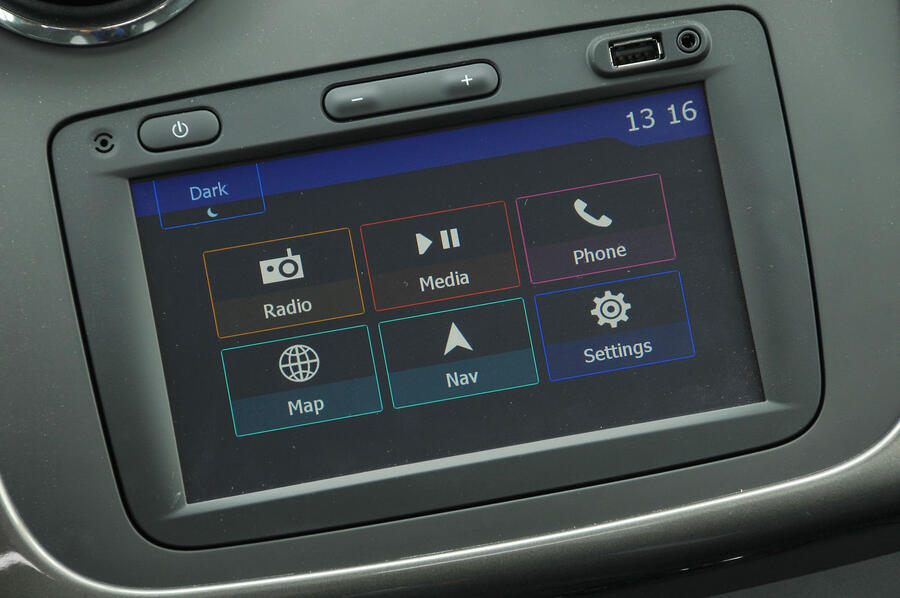
Counting the miles as well as the pennies – 11 October 2017
The wealth – or rather the dearth – of LPG motoring has been shared around Autocar HQ in recent weeks, as others begin to discover that the curious Dacia with the Dutch numberplates doesn't bite.
News editor Rachel Burgess grabbed the keys to see how different a Dacia Sandero is to drive on LPG from one running on petrol.
"What's most remarkable about the Dacia is how unremarkable it is," she came back saying. "I was constantly trying to find ways in which it was different to drive from a non-LPG one but never managed it. I expected it to feel heavier (due to the extra fuel tank) and slower (extra weight) but it just felt the same."
Nic Cackett, former Autocar road tester and now editor of our sister title PistonHeads (check it out at pistonheads.com), went one further and broke the seal on the hallowed tank of petrol, not used since the Sandero LPG arrived.
"I rather liked the seamless transition to the Stepway's conventional reserve. It made the potential range seem colossal," said Nic, "but the eventual requirement for consecutive goes at separate pumps does rather reinsert the strife."
Back on the subject of pumps, I mentioned last time about a bad experience with one of the newer kinds of pump at a Shell I found on the A316 near Autocar's office.
The nozzle struggled to fit onto the car and then the got adaptor stuck on when refuelling was eventually done. I blamed myself.
Well, Rachel had the same problem with the same pump. "It didn't work," she said. "My partner and I both persisted for 20min before giving up and heading to another garage."
Rachel had another observation that tallies with my own: the indicator of how much gas is left in the tank gives about as straight an answer as a politician on Question Time.
How did my first ever attempt at filling up the LPG-fuelled Dacia go? Take a guess... pic.twitter.com/0RwcH1LlsY
— Rachel Burgess (@theburgeword) September 17, 2017
"I put in only £10 of fuel to a tank that was almost empty, yet when I got back behind the wheel, it said the LPG tank was full," she said. "My guess is that the LPG indicator is not an awfully fair measure of how much LPG remains in the tank."
She's right on that, but the office consensus on the available range from a tank of LPG is around 200-250 miles, depending on how brave you're feeling when the red light on the little tank indicator comes on.
Last word to Nic, who donned his road test flat cap one last time for his appraisal of the rest of the Sandero's manners.
"For all the practical limitations presented by our Stepway – the intransigent pumps, the south-paw steering wheel, the airport-car-park-confounding numberplate – it's worth reiterating what a happy and contented car the underlying model really is," he said.
"I drove it back from Luton one night – after midnight, after a flight and after very little sleep – and although the steering may be as slow as oak-tree growth, the Dacia's pulpy, affable ride and squidgy seats make it almost impossible to complain about."
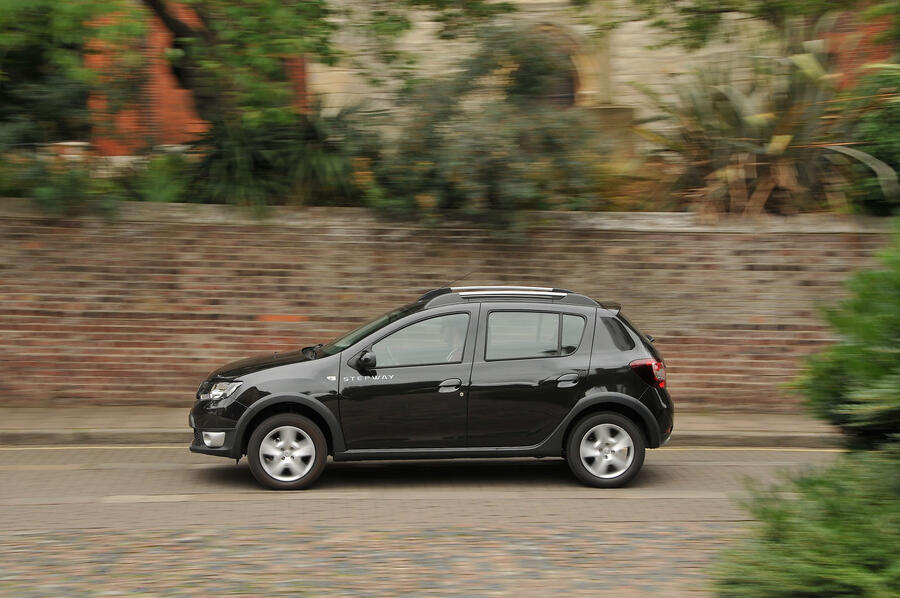
Mileage: 1592
Back to the top
Life with a Sandero Stepway LPG: Month 2
Counting the miles as well as the pennies – 06 September 2017
My first credit card bill since I took ownership of the LPG-powered Sandero Stepway has landed, and it makes for happy reading.
Which is good news, given that I signed off my first report on the car last month by noting this was the long-term test of the calculator and credit card as much as the car itself, to assess the viability of LPG as a fuel to help improve the UK's air quality problem and save motorists a few quid in the process.
We've had two brims of the 40-litre tank so far: a 28.17-litre fill that took me 213 miles, and a 30.76-litre replenishment that got me 234 miles.
Those fills were both carried out when the red warning light was illuminated on the LPG tank indicator, backing up some internet research that suggested Dacia has quite a creative interpretation of the amount of gas remaining.
Each time, LPG cost 58.9 pence per litre, meaning that the fills came in at £16.59 and £18.12 respectively. That means it costs £34.71 to travel 447 miles at an economy rate of 34.5mpg.
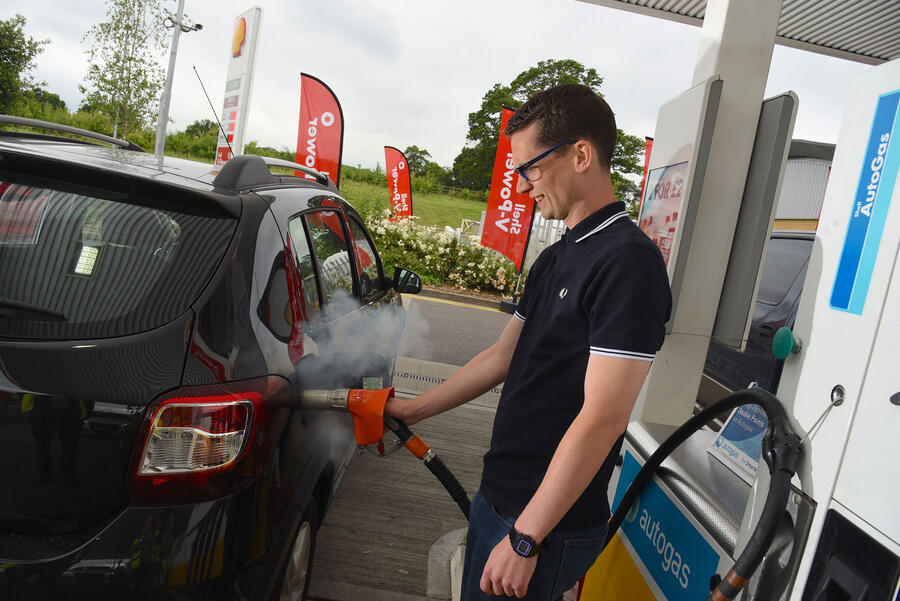
So how does that compare with a petrol-powered equivalent? As luck would have it, our sister magazine What Car? also has a Dacia Sandero (albeit in non-Stepway spec) on long-term test. Using the same 89bhp 0.9-litre three-cylinder engine, it is averaging 43mpg.
The economy in an LPG car is always worse, due to the fuel having a lower calorific value, but given that petrol has averaged around £1.15 per litre over the same period, the fuel cost of £54.35 to travel the same distance in a petrol Sandero leaves you an extra £20 out of pocket.
However, it's worth noting that the petrol Sandero would have done close to that distance between fills, rather than the more frequent stops needed in the LPG car.
When those fills have been needed, it has been fairly easy to find LPG fuel pumps so far, one always having a welcome habit of creeping up on a roundabout just in time for the tank to run completely dry (if that's the right term). I've encountered the pumps at only Shell filling stations so far, although it's worth noting that Shell isn't the only fuel company with LPG pumps.
While at Shell, though, I have come across two types of LPG pump. One I explained about in the first report (a simple push-on, twist and lock type), but a newer push-on-and-clamp-over device has also now emerged. It is supposed to be easier to use. Well, I faffed around with it long enough for the assistant in the filling station's shop to have to come out and show me how it is done…
Maybe my struggle was because, being a model intended to be sold to Dutch buyers, our Sandero Stepway's fuel tank needs an adaptor screwed over the inlet so it can be filled up using UK-spec LPG pumps.
My pump fail was complete when this adaptor subsequently got stuck. A pair of pliers and brute force was needed to remove it back at the office.
Still, I'll put all these down to lessons learned and teething trouble, because the bottom line so far is this: the LPG-powered Sandero is proving much cheaper to run than its petrol equivalent and the network of LPG pumps has not yet left us short and caused us to switch to the back-up petrol tank.
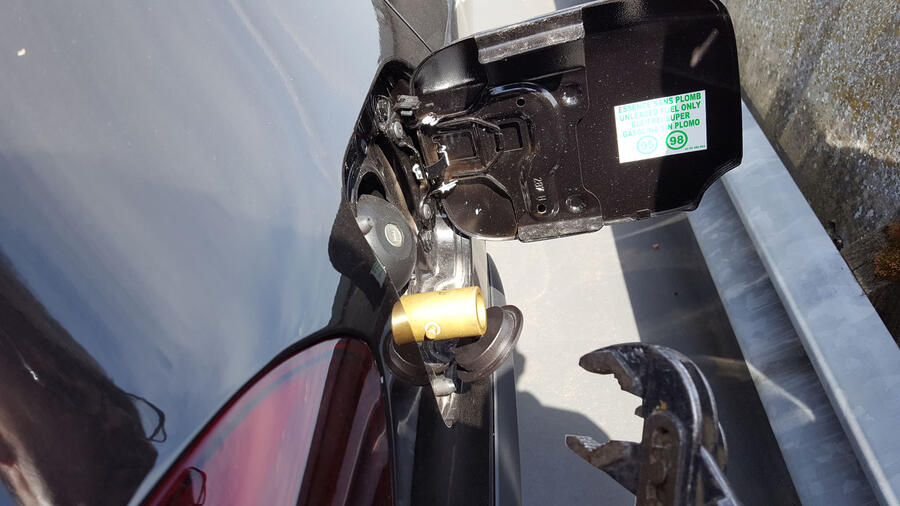
Mileage: 1399
Back to the top
Life with a Sandero Stepway LPG: Month 1:
Welcoming the LPG Sandero to our fleet – 02 August 2017
It's something we've all cast an envious eye at before: the third entry at the bottom of an illuminated fuel prices sign.
The one at Cobham Services near junction 10 of the M25 read '58.9 pence per litre' when I went to pick up this Dacia Sandero Stepway with a difference for our long-term test fleet.
That's the price of a litre of Autogas, the brand name for the most common form of LPG (liquefied petroleum gas) you'll find in the UK. That makes it about half the price of a litre of petrol or diesel or, in other words, rather appealing financially.
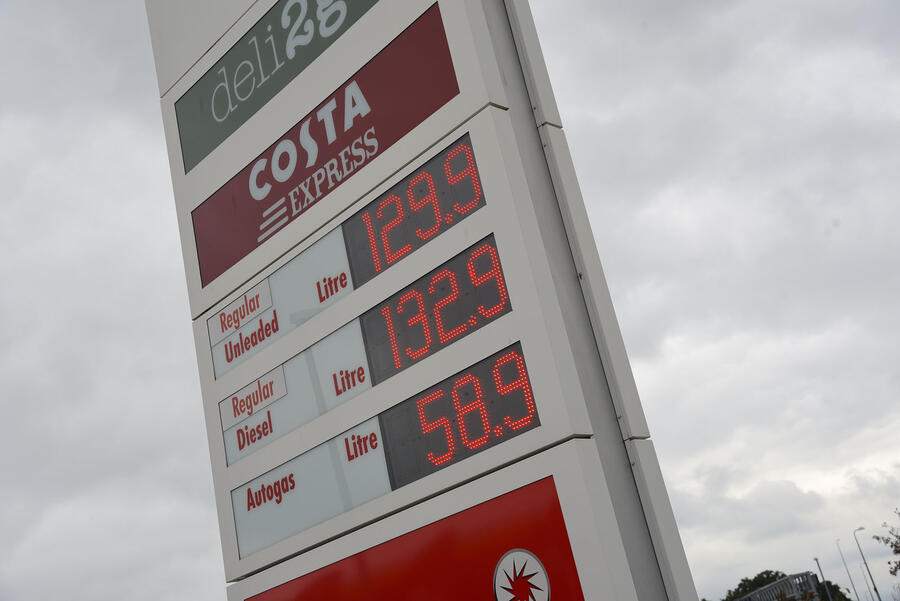
Despite a push at the turn of the century, however, LPG has not taken off in the UK. Unlike on the continent, no cars with a factory-fitted LPG tank are sold here, meaning a conversion is the only way to go if you want to drive on the cheapest fuel available on UK forecourts.
The gas industry wants to change that and is trying to get LPG back on the agenda as a 'here and now' solution to the UK's well-publicised and pressing air-quality problems. With the government vowing to ban sales of new petrols and diesels in 2040, the LPG lobby argues that the infrastructure is already in place to support a less-polluting fuel that can make an immediate difference to air quality at a palatable cost.
So, to that end, we're running the Sandero Stepway for six months to find out how well an LPG-powered car works in Britain in 2017.
You'll notice our car has Dutch numberplates and the steering wheel on the wrong side. Because manufacturers do not sell LPG-powered cars directly to new-car buyers in the UK, we decided against a conversion and popped over the Channel where they do sell them.
Are UK car buyers missing out? That's one of the things we'll be finding out.
So why a Sandero? Well, it's the epitome of cheap motoring. The cheapest fuel on sale in the UK, in the cheapest car.
Or in the words of Dacia's Dutch website, run through Google Translate: "What is even smarter than a Dacia? A Dacia LPG!"
We had a Sandero on our fleet when it was launched, so are well versed in its simple charms, which haven't diminished in the intervening period.
This time it's a Sandero Stepway, which is raised by 40mm compared to the standard car, has extra kit and looks more rugged. There's not much difference in how they drive, although the Sandero Stepway has a softer ride.
The engine powering the car is the familiar 89bhp 0.9-litre turbocharged three-cylinder unit from myriad Dacia and Renault models. Our car has the same 50-litre petrol tank as Sanderos sold over here and will happily run on petrol all day as normal, but in addition has an LPG tank. It is 40 litres in capacity and sits in the boot in the space where a spare wheel would be.
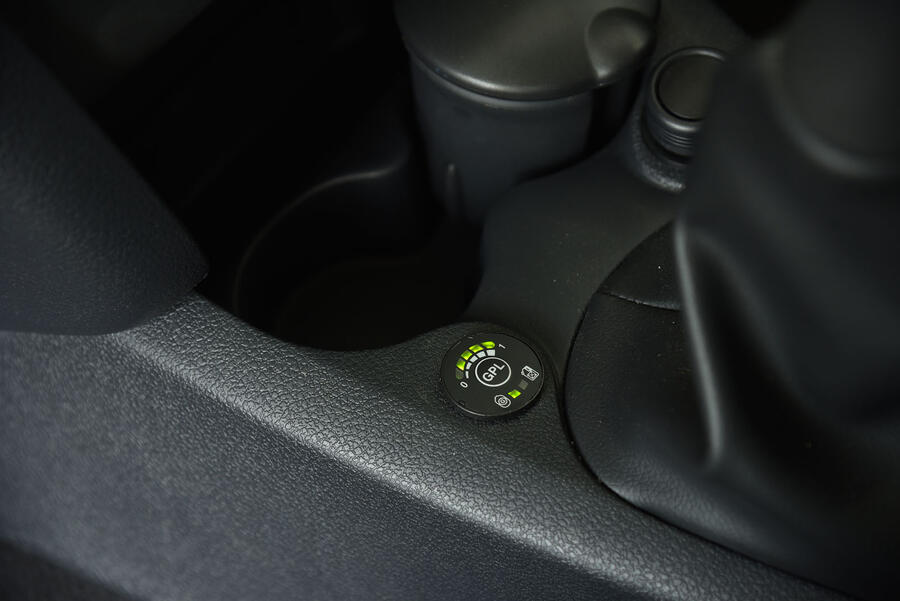
The tank is round and unobtrusive, robbing no obvious usable boot capacity, and is a world away from the mental image of aftermarket LPG conversions that leave the car's boot filled with gas cylinders.
The obvious difference is when you look behind the fuel filler cap. Next to the conventional petrol one is a smaller cap for the LPG. In the UK you need to screw a supplied adaptor into the LPG filling neck each time you refill because pumps vary according to territory.
To refill, you slot the pump over the adaptor, turn 90 degrees to lock it, pull the handle on the pump and latch it on, and then press the button on the dispenser to start filling. It's really not as complicated as it sounds and dispenses fuel at the speed of the slower petrol pumps you might find on an older forecourt.
Just watch out for the pump making you jump with a big release of pressure when you unlatch the handle afterwards.
There's only one difference inside between an LPG-powered Sandero compared to a regular one: a little low-tech dial next to the gearlever. The dial indicates how much fuel is left in the LPG tank and tells you whether you're running on petrol or LPG, with the option to switch between the two.
We have a full tank of petrol on board for emergencies but don't plan to use it during the car's six months here or this would all be a bit pointless, wouldn't it?
The fuel is cheap, then, so what of the car compared to a standard Sandero? It's a bit like comparing apples and oranges given the differences in taxation and various incentives and rates, and the fact that our car is one of the last pre-facelift versions.
Setting all that aside, an LPG-powered Sandero Stepway will cost €15,380 (£13,490) in the Netherlands compared with €15,980 (£14,017) for a conventional petrol one.
In the UK, a Sandero Stepway is much cheaper to begin with (£8995-£10,995 for this engine, depending on the trim) before you consider the different taxation system. But when cars equipped with factory-fitted LPG tanks were sold in the UK at the turn of the century, they cost about £1000-£1200 more than their petrol-powered equivalents. Let's imagine that it would cost from £10,000 here.
This will be the long-term test of the calculator and credit card as much as the car. How many LPG fuel stations are there? How does the economy compare with a petrol car? Is it really cheaper? How often do you have to fill up? How many people could benefit from switching to LPG?
I'll be channelling my inner Carol Vorderman to find out.
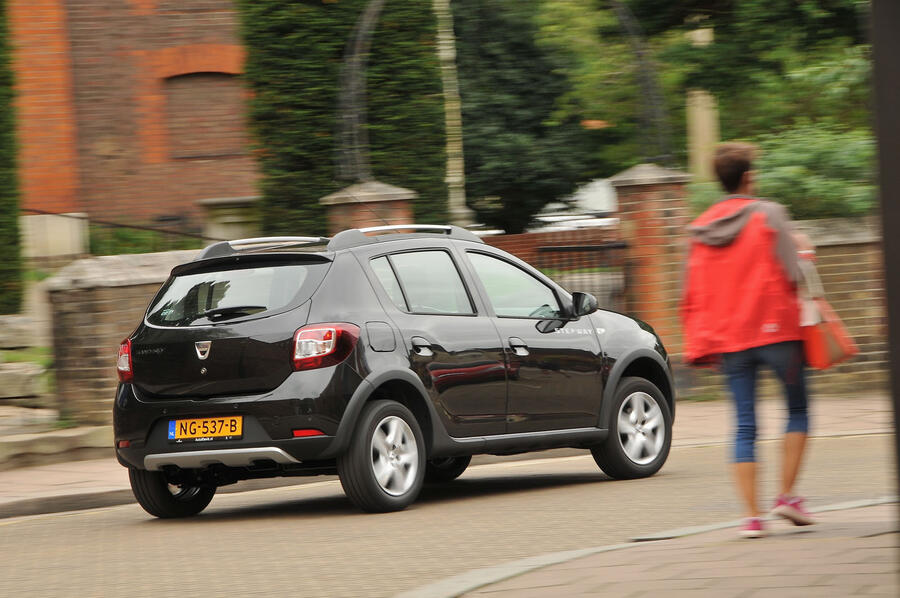
Dacia Sandero Stepway LPG specification
Specs: Price New £13,490; Price as tested £13,490; Options None
Test Data: Engine 898cc, turbocharged petrol; Power 89bhp; Torque 103lb ft; Top speed 104mph; 0-62mph 11.1sec; Claimed fuel economy 55.4mpg; Test fuel economy 35.1mpg; CO2 115g/km; Faults Stuck adaptor (fixed); Expenses None
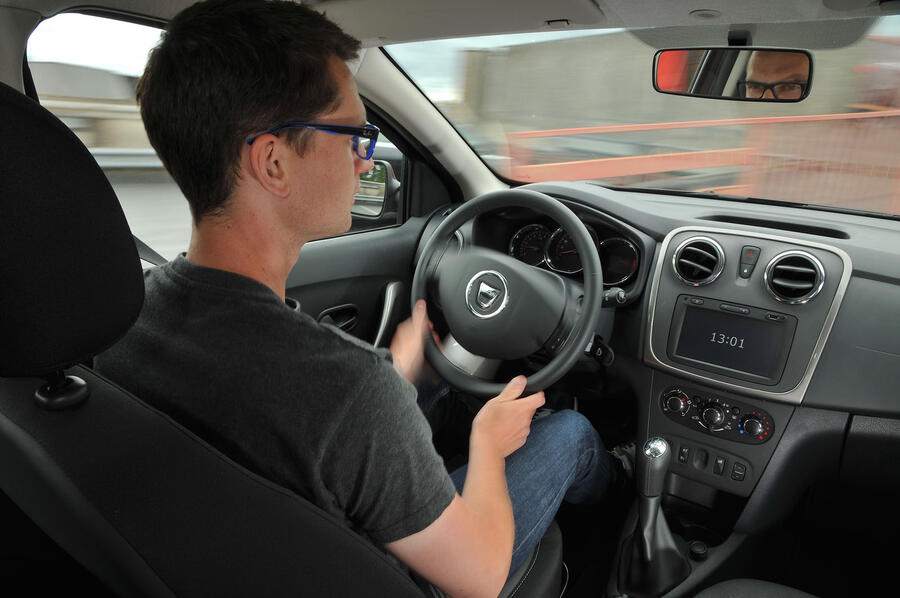
Back to the top